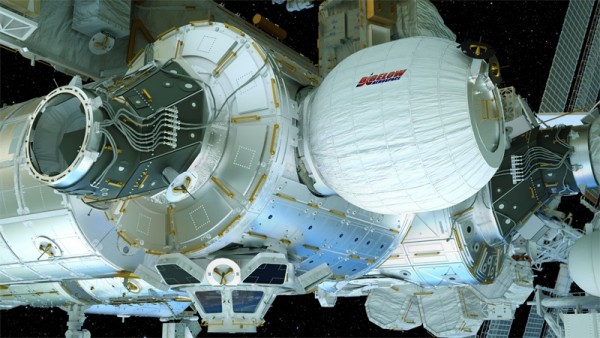By Ana Verayo, | April 11, 2016

The new BEAM inflatable space module will be attached to the ISS.
After a successful launch of the SpaceX Dragon cargo spacecraft, the cargo resupply mission arrived at the International Space Station on April 10, Saturday, carrying precious payload filled with crucial supplies such as science experiments and a prototype inflatable space habitat that will be attached to the orbital lab.
Like Us on Facebook
The cargo resupply ship was launched on Friday, April 8 from the Cape Canaveral Air Force Station in Florida where the Dragon spacecraft was carried to the space station using its Canadarm2 robotic arm on Saturday morning.
According to European Space Agency's astronaut, Tim Peake, it looks like we caught the Dragon, radioing back to ground mission control when the station's robotic arm grabbed the spacecraft and was later attached to the station's Harmony module at 9:57 A.M. EDT which will be docked for one month.
Peake was in charge of commanding the 60 feet long Canadarm2 robotic arm as it reached out to grab a hold of the Dragon capsule. The Dragon capsule arrived within the vicinity of the space station around 7:23 A.M. EDT attaching to its port and Harmony module after 2.5 hours.
Dragon's arrival carries payload worth almost 7,000 pounds which has 3,800 of supplies for the six man crew, including spacewalk gear and experiments.
These new experiments involve how antibodies can affect muscle degradation, to investigate on nanoscale particle flows and protein crystal growth in a microgravity environment, to ultimately help design new drugs to fight disease.
Apart from medicine, the capsule is also carrying "Tokyo Bekana" Chinese cabbage and "Outredgeous" red romaine lettuce seeds that will be grown and cultivated in space for the Veggie chamber. These plants will become the second crop of vegetables to be consumed by the astronauts, if they grow as expected.
Also included in this precious cargo is the BEAM ( Bigelow Expandable Activity Module) which is still in its experimental stages, where this can potentially become the next inflatable space habitat for space explorers, that will be attached outside the Harmony module.
The expandable habitat is designed by Bigelow Aerospace for NASA so that astronauts can investigate and gauge how this new node can provide protection from space radiation and debris, including contamination which can offer larger inflatable space habitats for future missions.
According to NASA's manager of the ISS, Kirk Sherman, BEAM will be installed by the middle of the month, which is relatively quick since Dragon arrived. There will be a specific period needed for thermal stabilization once it arrived.
Upon extracting the deflated BEAM from the Dragon capsule's trunk, it will be attached to the orbiting space laboratory for a two year test. However, BEAM will remain deflated until late May which will be inflated four times its size since its launch volume, similar to a small bedroom.
-
Use of Coronavirus Pandemic Drones Raises Privacy Concerns: Drones Spread Fear, Local Officials Say

-
Coronavirus Hampers The Delivery Of Lockheed Martin F-35 Stealth Fighters For 2020

-
Instagram Speeds Up Plans to Add Account Memorialization Feature Due to COVID-19 Deaths

-
NASA: Perseverance Plans to Bring 'Mars Rock' to Earth in 2031

-
600 Dead And 3,000 In The Hospital as Iranians Believed Drinking High-Concentrations of Alcohol Can Cure The Coronavirus

-
600 Dead And 3,000 In The Hospital as Iranians Believed Drinking High-Concentrations of Alcohol Can Cure The Coronavirus

-
COVID-19: Doctors, Nurses Use Virtual Reality to Learn New Skills in Treating Coronavirus Patients







